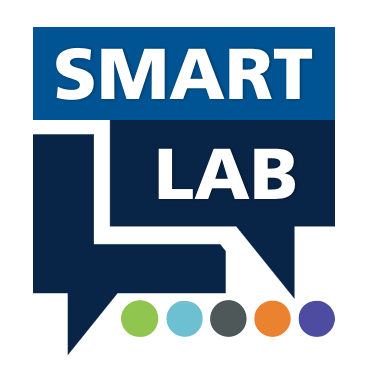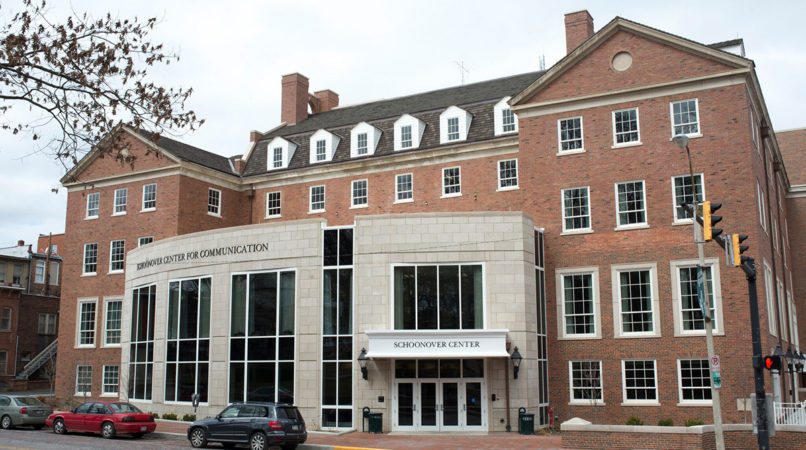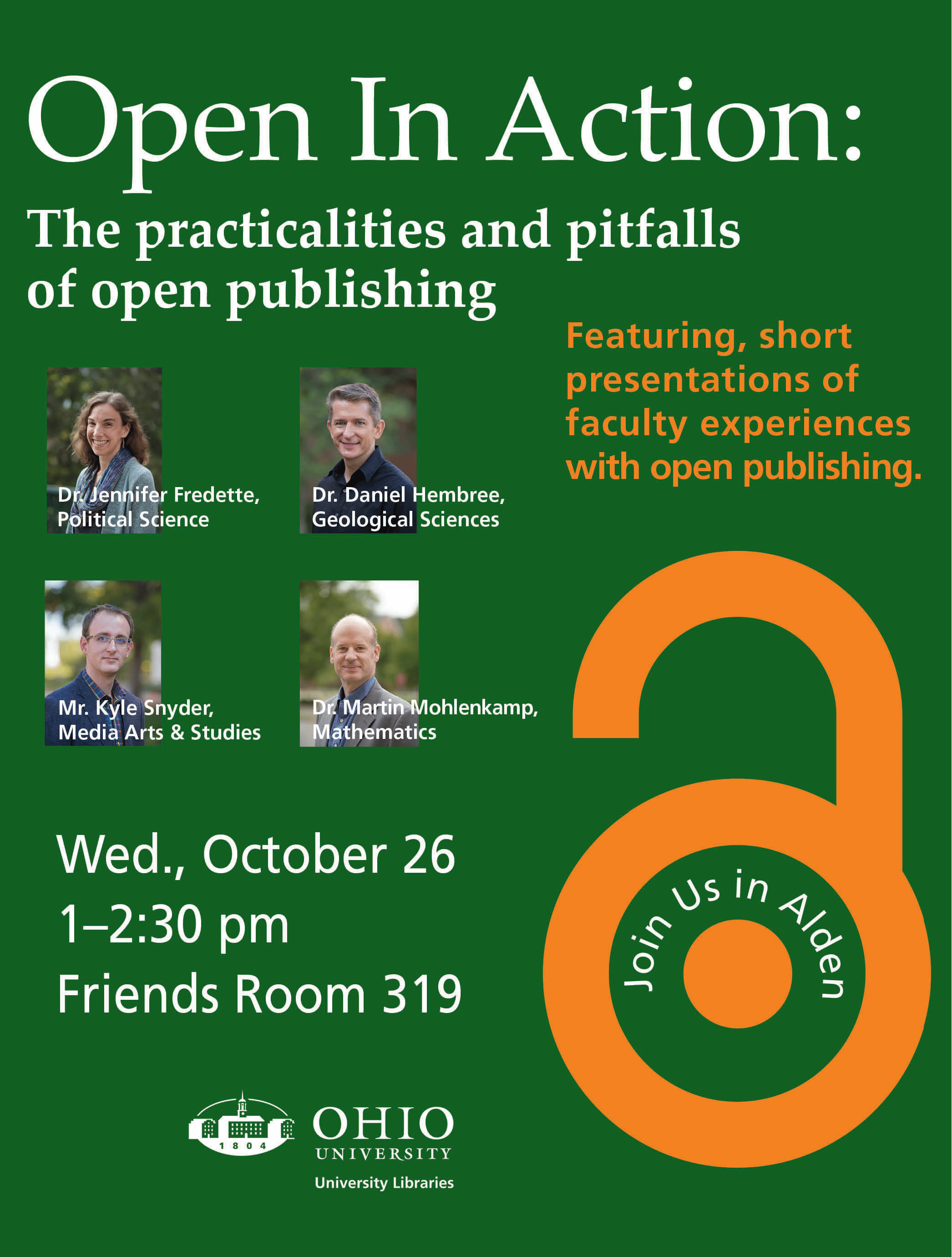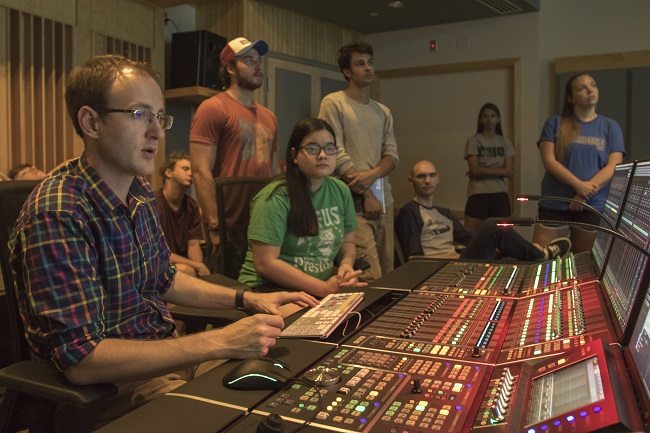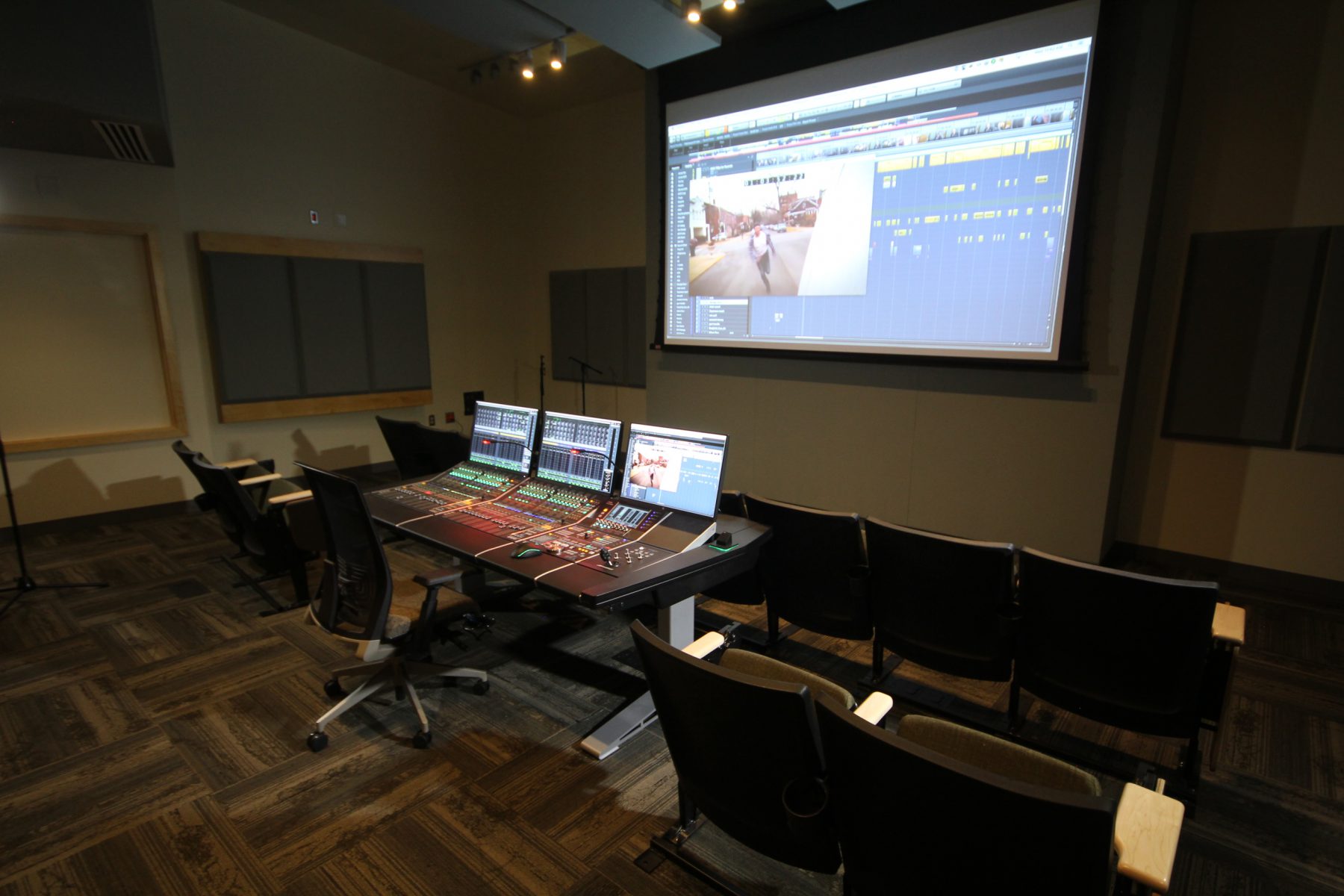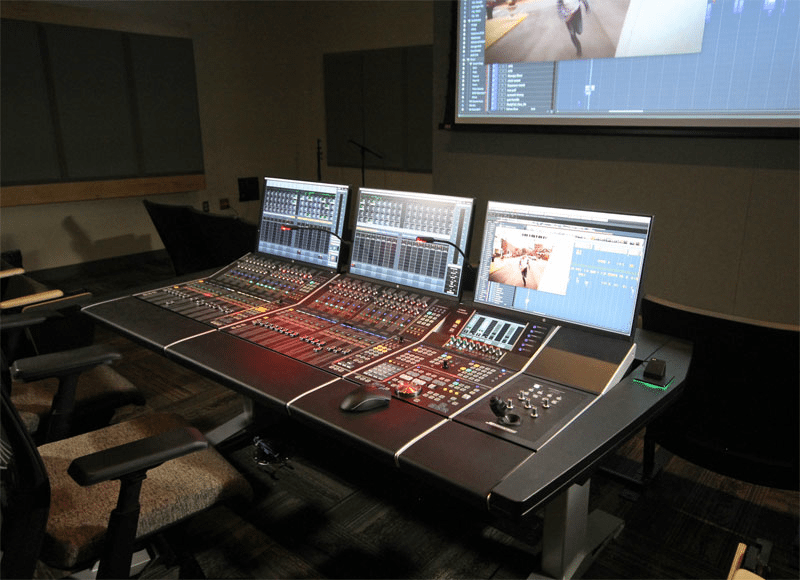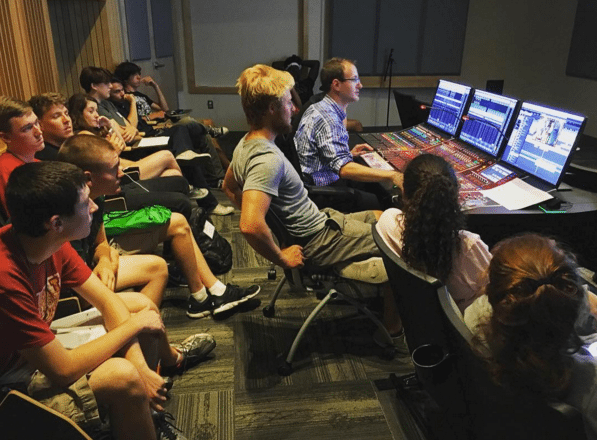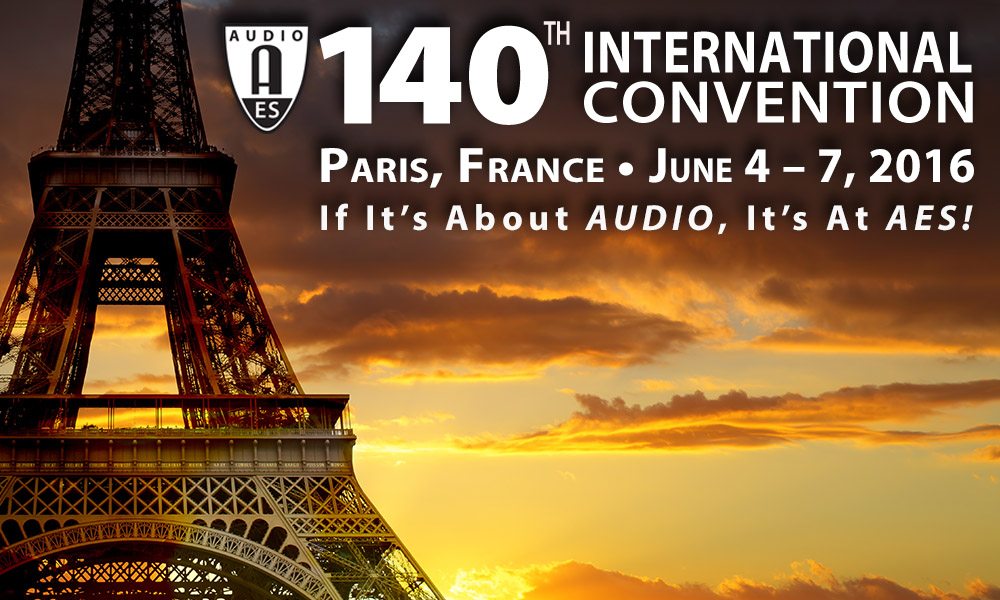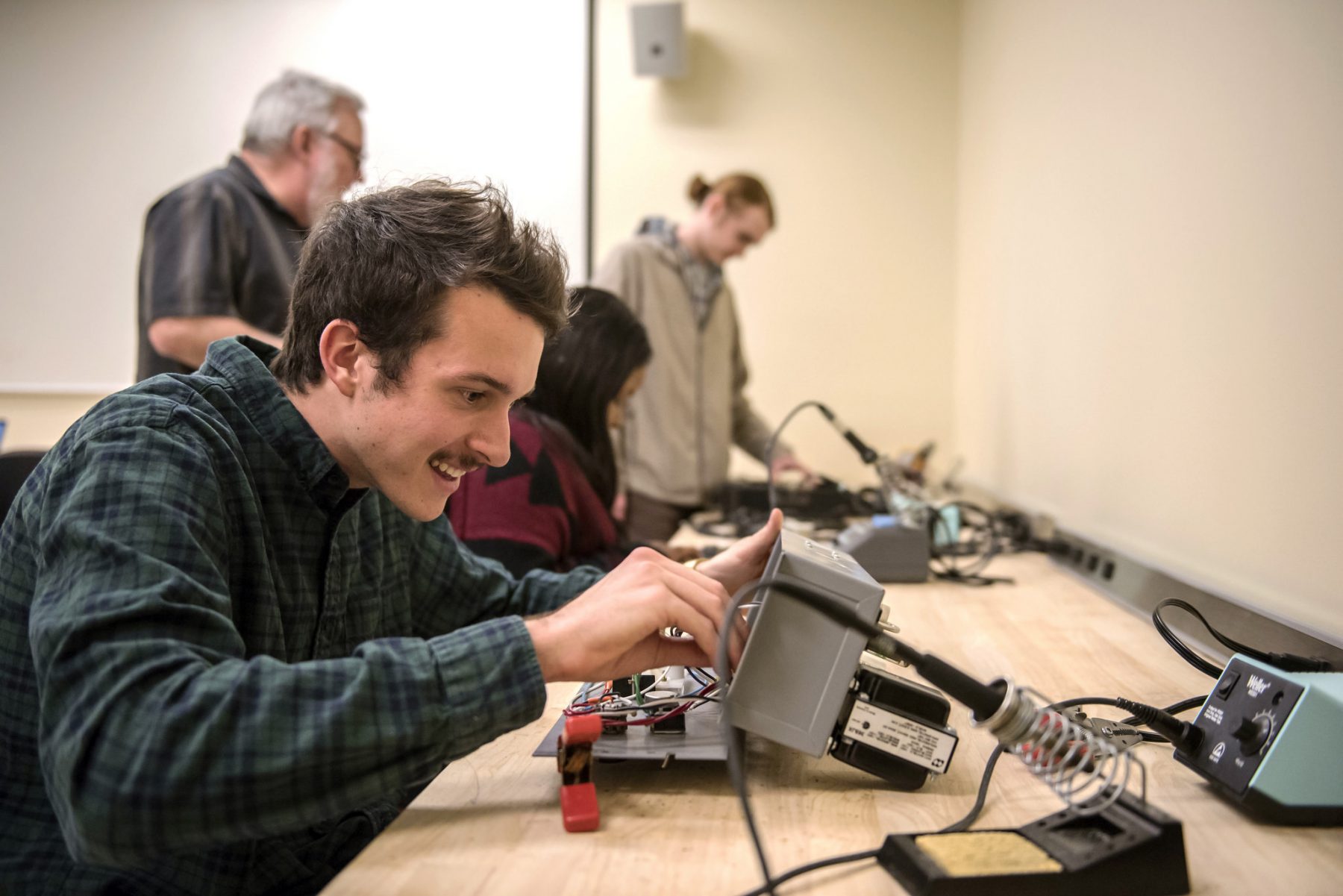Ohio University Lecturer and School of Media Arts & Studies Outreach Coordinator Kyle P. Snyder was recently featured by the Scripps College of Communication Social Media Analytics Research Team Lab in a video profile series. The Social Media Analytics Research Team (SMART) was established as an interdisciplinary laboratory to foster and promote cutting-edge research. Founded in 2015, the aim of the SMART Lab is to further enhance the understanding of online user behavior in online communities and predict future outcomes.
ohio university
Snyder Spearheads RDL Dante Interface & Headphone Amplifier Installation
As part of a progressive movement to put students ahead of their time with professions in audio engineering and multimedia content creation, Ohio University’s Scripps College of Communication incorporated RDL’s TP-HA1A FORMAT-A™ Headphone Amplifier, along with other RDL FORMAT-A and Dante networked audio products, into its new Schoonover Center for Communication.
While the School of Media Arts & Studies (MDIA) at Ohio University is already globally recognized for its diverse programs in the media industries, the Schoonover Center demonstrates forward thinking from the school’s faculty, says Lecturer and Outreach Coordinator Kyle P. Snyder.
“We’re training students for jobs that do not yet exist, but will in 18 months,” he recently stated in an article for ProSoundNetwork.com
Snyder, a systems engineer on the Schoonover Center project, says that they designed the Critical Listening and Post-Production Studio as a facility where students can learn a variety of listening and playback scenarios, both conventional and cutting edge.
Schoonover Center was a multi-year renovation that brought all the schools of Ohio University under the same roof for the first time since 1968. Snyder says they implemented the RDL FORMAT-A/Dante headphone solution, which was “a major upgrade over our previous facility. This new studio allows us to teach updated technology and techniques to students and prepares them for the audio jobs of tomorrow.”
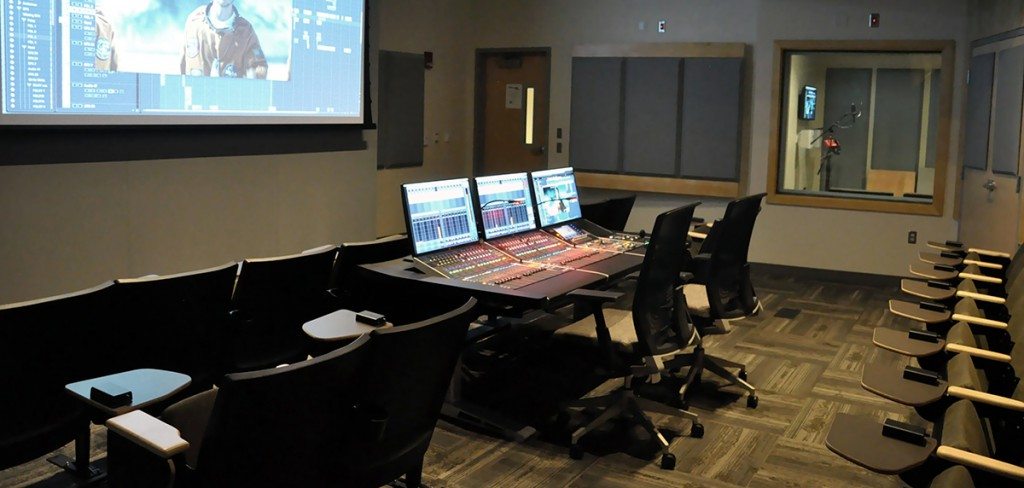
The Schoonover Post-Production and Critical Listening Lab is comprised of the following: a 32-fader Yamaha Nuage control surface (driven by Nuendo and Yamaha interfaces); a Dynaudio BM15A 5.1 surround monitoring array; 22 RDL TP-HA1A stereo headphone amplifiers on student desks; three RU-TPDA FORMAT-A distributors; and an RDL RU-NFDP Dante to FORMAT-A Interface, which connects the headphone amplifiers to the Dante network.
RDL’s FORMAT-A family of products send, receive, and distribute audio and DC power over standard CATx cable and connectors. When combined with RDL FORMAT-A/Dante interface products, all FORMAT-A products may be used as Dante endpoints.
Starting with a “clean slate” when designing the Critical Listening and Post-Production Studio, Snyder says RDL’s products were the obvious choice.
“We were excited by the RDL solution because of its Dante integration, which allowed for seamless connectivity between our 100% Dante room as well as the overall simplicity and ease of installation. We could find no other solution that would afford us the opportunity to run audio over standard Cat 6, which is tremendously easy to terminate compared to soldering endless connections. As we handled facility installation in-house, this ease of deployment was truly critical. Vintage King LA and RDL engineering support both proved tremendously valuable resources throughout the design phase and we’re thrilled with the end result.”
After conducting extensive research, Snyder says they discovered that RDL’s TP-HA1A allows independent monitoring and listening, which they had never seen. “Generally devices like that are completely analog/hardwired and we have to worry about grounding issues, so I love that FORMAT-A uses Standard Cat 6 and would be simple to deploy and repair in our large installation.”
The students at Ohio University are “overwhelmingly enthusiastic” about the system integrated within Schoonover Center, Snyder says, and the RDL headphone amplifiers have worked well because “they can live as just another Dante output on our network. Students can listen to work and hear us via talkback provided through the Nuage, which is fantastic, and we can carry on a ‘normal class.’ It’s a fantastic installation and an amazing product.”
Snyder Presents At Ohio University Library Open Access Publishing Event
The world of publishing is constantly changing, and in response to that change, OHIO Libraries is hosting a panel discussion on the benefits and challenges of open publishing.
Four OHIO faculty from the departments of math, political science, media arts and studies, and geological sciences will speak at the “Open in action: the practicalities and pitfalls” panel presentation, which will be held on Oct. 26 at 1 p.m. in Alden 319. The panel will give researchers and faculty the opportunity to hear from their colleagues who have successfully published open access resources and learn more about the value of open publishing.
The open access movement promotes access to academic research by freely disseminating ideas and information, often online.
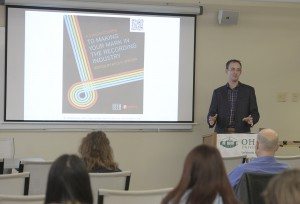
“Under the current publication system, sometimes institutions can’t even afford to subscribe to the commercial journals in which their own researchers are published,” said Andrew Stuart, assistant head of reference.
Kelly Broughton, assistant dean for research and education services, said the world of publishing is quickly changing, and open access resources are a response to that change.
“Open access has the potential to change our broken scholarly publishing model—to remove the pay walls from the results of research funded by taxpayers and tuition,” Broughton said. “The only way to really accomplish this is for faculty to be open to new modes of scholarly communication and to test the impact of these modes.”
Jennifer Fredette, assistant professor of political science, will be speaking at the panel about her open licensed publication “Constructing Muslims in France: Discourse, Public Identity and the Politics of Citizenship,” which was published through the Temple University Press in 2014. The book is available for free online with a Creative Commons license through Knowledge Unlatched, an organization that works with libraries and publishers to make research more freely available.
“For me, as a scholar, open access is key for knowledge dissemination,” Fredette said. “It’s amazingly useful for me to be able to tell students, colleagues, and people I meet at conferences, ‘Oh yeah, you might want to read my book. It’s free; just Google my name.’ That’s an incredible resource.”
Martin Mohlenkamp, an associate professor of mathematics and another speaker on the panel, has both taught with open resources and co-authored an open access textbook. He has incorporated open resources into his teaching by having his students improve Wikipedia articles on math concepts as class assignments, and he uses the SageMath cloud computing environment in some of his courses. This software allows his students to collaborate with each other on the same programs, even if they are using different computers.
His book “Introduction to Numerical Methods and Matlab Programming for Engineers,” available free online, is used in the MATH 3600 Applied Numerical Methods course. He co-authored the book with Todd Young, who created the Math 3600 course and was able to customize the text for that class. One piece of advice that Mohlenkamp has for researchers who want to look into open publishing is “scratch your own itches.”
“Do something that you’re going to get value out of and you’re going to use so that your own dissatisfaction is fixed,” he said.
Daniel Hembree, associate professor of geological sciences and another panel speaker, serves as a handling editor for Palaeontologica Electronica, an open access journal. He said the journal’s online presence gives researchers the opportunity to include digital features such as animation in their articles, and the journal can also easily publish in full color. Having the journal online has also helped the content reach an international audience.
“There are no publishing costs associated with it. It’s a nice venue for getting research out and making it available globally,” Hembree said.
Kyle P. Snyder, a lecturer in media arts and studies and another panelist, authored the open access book “A Crash Course to Making Your Mark in the Recording Industry.” The publishers, Routledge and Focal Press, partnered with Creative Live to make the book open access, although readers have to provide an email address to download a copy. Snyder not only contributed his own writing but also reached out to other researchers in the field to contribute.
“My goal was to take what I thought was the best information that they had and make it free to audio engineers. If I wrote a basic book right now, what would I want my students to have access to?” he said.
Snyder is also chair of the education committee for the Audio Engineering Society, a professional society devoted to audio technology, and has worked with open publishing in that role.
The Libraries is holding the panel to celebrate Open Access Week, which will be held by SPARC Oct. 24-30 to encourage publishers and universities to increase access to open resources.
The panel is only one of many of the Libraries’ initiatives to increase awareness of open resources, such as the Alt-Textbook initiative, which helped students save money by encouraging faculty to use open access and Library resources rather than textbooks.
Snyder Integral to OU Install Of Yamaha Nuage
Now in his fifth year of teaching in the School of Media Arts & Studies at Ohio University, Lecturer and Outreach Coordinator Kyle P. Snyder has been hard at work with his colleagues Josh Antonuccio, Eddie Ashworth, and Jeff Redefer transforming the Music Production curriculum within Scripps College of Communication to prepare students for real world studio jobs. “What I find most rewarding about working with students in our field is seeing their evolution from day one through graduation,” Snyder says. “It’s tremendously rewarding to see that evolution over our brief four years together, which really gives you a phenomenal glimpse into how big an impact we have upon their careers.”
Snyder’s approach to the school’s studio facilities, is making the biggest impact on outbound students, as he opts for durable gear that allows as many hands on as possible at one time. With this in mind, the OU professor recently worked with Vintage King’s Chris Bolitho and Greg Fraser to bring in a Yamaha Nuage workstation and Nuendo software for a state-of-the-art mixing room. We recently caught up with Kyle Snyder to talk about why he choose this particular desk, how he uses it in tandem with an analog console and what his students think about the work surface.
What influences the decisions you make when purchasing equipment that students will work on?
What’s interesting about purchasing for student use is you certainly want the solution to be intuitive at some level, however, the biggest selling point for me tends to be durability. With the Nuage, we found a solution that was well suited for our needs and happened to be built by Yamaha so I knew it could stand up to the rigors of touring, let alone student use.
In addition to the Nuage, you also have a Rupert Neve Designs 5088 in the school’s studio space. How do you use both work surfaces?
We start students learning on the Rupert Neve 5088 and with the Neve Porticos and then we bring them into here, the Nuage and Nuendo room, which has channel strips built in. That’s a fantastic teaching moment to take students from an analog room through a hybrid mixing room into a completely digital Nuage/Nuendo room that’s backed up with DANTE and show them the way the workflows can work and complement each other.
Talk about the Nuage room’s set-up and how you utilize the desk to teach students?
We [wanted] it to be the best post-production teaching facility that it possibly can. In doing so, we’ve situated the Nuage in the center of the room, sort of like a Hollywood cutting stage with 20-25 seats around it, so faculty can be at the mix position teaching students, but students can be up discussing with faculty how the mix should work. Students can get up and be a part of the mixing process and that’s really powerful.
There are so many options when it comes to digital workstations, how did you come to decide on the Nuage?
In searching for a new control surface, I remembered seeing the Nuage on the AES floor years ago back when it launched. I pulled up the info online and saw we could control Pro Tools and that Nuage was very affordable so it was an easy sell. However, we started to dig into Nuendo since we’d need to run it for the VST connections and we were just blown away by all the features offered by the DAW. Our reaction was that it was, finally, a professional piece of software.
What has been the students’ reaction to working on the desk?
Students have been amazed with how intuitive the control surface is and how flexible the unit is for working. In class we’ll frequently split the desk and have students mixing side by side – it’s a phenomenally effective tool.
If you’re interested in learning more about the install and use of the Yamaha Nuage at Ohio University, check out the video below or read the original post by Vintage King.
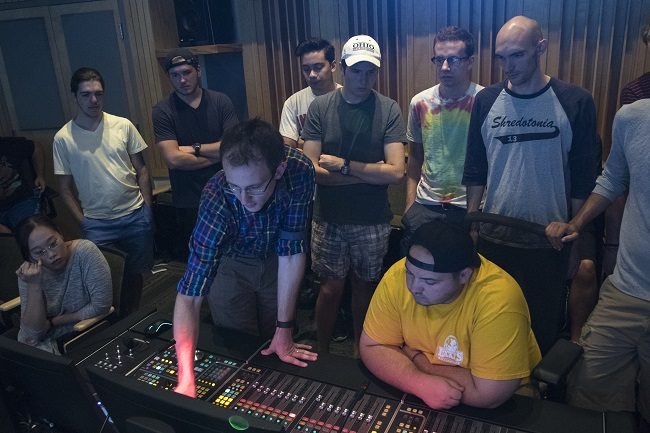

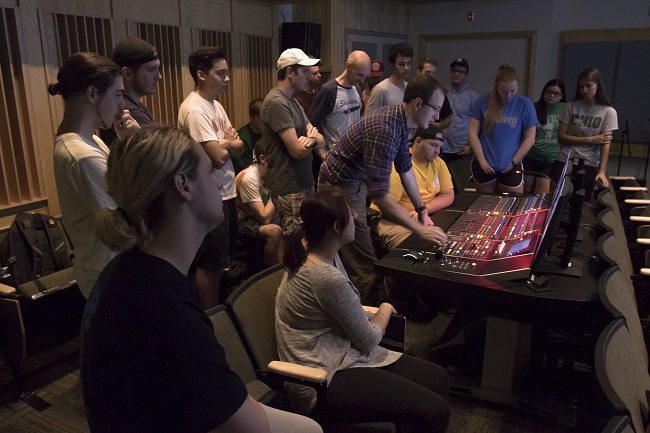
Snyder Featured By Mix Magzine & Others For Design Of MDIA Post Production & Critical Listening Studio
Preparing audio engineers and content creators is key to the curriculum at Ohio University’s (Athens, Ohio) Scripps College ofCommunication, School of Media Arts & Studies (MDIA). And now, thanks to pro audio supplier Vintage King L.A. and Yamaha Professional Audio Steinberg staff, the school now houses a 32-fader NUAGE DAW advanced audio post-production system in their Steven L. Schoonover Post-Production andCritical Listening Lab with a companion classroom containing 30-plus seats of Nuendo 7.1. The college also boasts a second 16-fader NUAGE system in theirImmersive Media Initiative facilities.
Kyle P. Snyder, Lecturer and Outreach Coordinator within theSchool of Media Arts & Studies who has a long history of system design,initially began to research a new state-of-the art system, one that was more appropriate for an educational environment than their previous system and one that could handle the ever-increasing influx of students within the music production curriculum. “Looking around initially at other controllers that would work with ProTools, I stumbled upon NUAGE which remembered from when it was first launched at AES by Yamaha,” states Snyder. “It had a great presence,and I thought it would be a very interesting work surface though I was concerned about its reliance upon Nuendo. However, as I continued my research it became evident that the most important decision was our software platform for teaching. We made the decision that adopting Nuendo as an editing platform,which isn’t necessarily normative but is absolutely the superior tool was the way to go. This allows us to focus more on technique, backed up by the trademark Yamaha stability that NUAGE brings to the table.”
The facility also houses a Dynaudio BM15A 5.1 surround-monitoring array, featuring nine Foley pits, an ADR stage, projection capabilities for post-production mixing, and more. The MDIA Sound Studios offer a Rupert NeveDesigns 5088 analog-centric music recording and mixing studio with tracking rooms alongside two other control rooms, including the brand new post/listening lab and a mixing/mastering facility.
Snyder said the Yamaha Steinberg sales representative offered to send over a demo system and came out to assist with their tech expertise when necessary. “I was blown away by how easy it was to set up,” Snyder says. “Just knowing things were going to work easily was critically important. With the help of a few students, we set up the NUAGE demo unit within 5 minutes. The system is a game changer for post sessions making them very easy. I was very impressed with how Yamaha and Steinberg developed the system. Working with everyone at Yamaha has made it so much easier and helped us through the transition process. This is the kind of corporate support you just don’t see often.”
The 16-fader NUAGE system is installed as part of the ImmersiveMedia Initiative (IMI) within Ohio University’s Game Research and ImmersiveDesign (GRID) Lab. The IMI was created for students to produce game and virtual reality content. These same students are also shooting video in 360—they have already produced a 16-minute short film–using green screen for motion capture,and more. “There is absolutely no better software for creating audio for virtual and augmented reality than Nuendo,” notes Snyder.
In both the large lab and singular studio, Nuendo works nicely;several students can be in front of the system in the studio and with the added Nuendo seats, the others can work over the network down in the classroom lab and send their part of projects into the studio, adding in vocals, dialogue,and sound effects. The class as a whole can be working on different projects through to the final mix stage, thanks to the Nuendo network.
With their critical listening classes, Snyder said faculty are very excited about the capabilities of the system and can feed RDL Format-A viaDante right out to every desk. Using Radio Design Labs RDL TP-HA1A stereo headphone amplifiers for personal listening purposes, classes can listen via their own headphones and playback from NUAGE via headphone amps at their own pace. “NUAGE is very much what previous products we’ve owned were trying to achieve, so we are really proud to finally be able to offer this superb monitoring and networking environment to our students with our new Dante systems.NUAGE with Nuendo work extremely well, very seamless. It’s really something else.”
Article originally published by Mix Magazine. Similar stories can be seen at Yamaha Commercial Audio Systems, Yamaha Pro Audio,ProSoundWeb, ProSoundNetwork, and Sports Video Group.
Snyder Featured By ProSoundNews For Design Of MDIA Post Production & Critical Listening Studio
Preparing audio engineers and multimedia content creators for the future at Ohio University’s Scripps College of Communication, the faculty and facilities of the School of Media Arts & Studies (MDIA) demonstrate a great deal of forward thinking, attests Kyle P. Snyder (see original article in ProSoundNews), Lecturer and Outreach Coordinator.
Last month, Snyder and his colleagues christened their new post production and critical listening studio within the multimillion-dollar Steven L. Schoonover Center for Communication. The new studio, a Walters-Storyk Design Group facility with system engineering by Snyder, was created to teach conventional as well as bleeding-edge audio production techniques. As such, it’s a most exciting time in this relatively small corner of Ohio University, a campus boasting over 20,000 students. At OU, you’ll find Snyder teaching alongside Josh Antonuccio, Eddie Ashworth and Jeff Redefer in their new studios.
“We’re training students for jobs that do not yet exist but will in 18 months,” predicts Snyder of new audio production professions. “We’re fortunate to reside within a very progressive college with a lot of really interesting things going on. We’re able to take risks. Right when we were thinking about what equipment to put in here, the post-industry was breaking wide open with new possibilities. I think we’re living at an intersection where students are getting ready to move into amazing careers.”
The Schoonover Post-Production and Critical Listening Lab is centered on a 32-fader Yamaha Nuage control surface and Dynaudio BM15A 5.1 surround monitoring array, featuring nine Foley pits, an ADR stage, projection capabilities for post-production mixing, and more. The MDIA Sound Studios already offered a Rupert Neve Designs 5088 analog-centric music recording and mixing studio with shared live tracking rooms with another control room; today, the complex features the same 5088 alongside two other control rooms, including the brand-new post/listening lab and a mixing/mastering facility.
Committed to teaching Nuendo as a preferred DAW for post production (while also teaching Pro Tools and Adobe Audition techniques), the program carefully researched all workstation and work surface options for the new facility, resolving to Nuendo and Nuage, respectively, for a variety of reasons. “When we were setting out to create a new post-production room, we initially selected one of the more mainstream post-production platforms—a rational choice,” says Snyder. “Looking at budgets and long-term functionality, we determined that it wasn’t feasible.
“We determined that the Yamaha Nuage control surface provides expandable and future-proof functionality, and as a team, we started looking at all the components surrounding Nuendo and Nuage, realizing how Nuendo is astonishing software. For our money, it feels professional and works phenomenally well with world-class support. As a faculty, we are committed to teaching techniques, not a piece of software. We just wanted to have the best tools to teach post-production; we’re pretty sure that’s Nuendo and Nuage.”
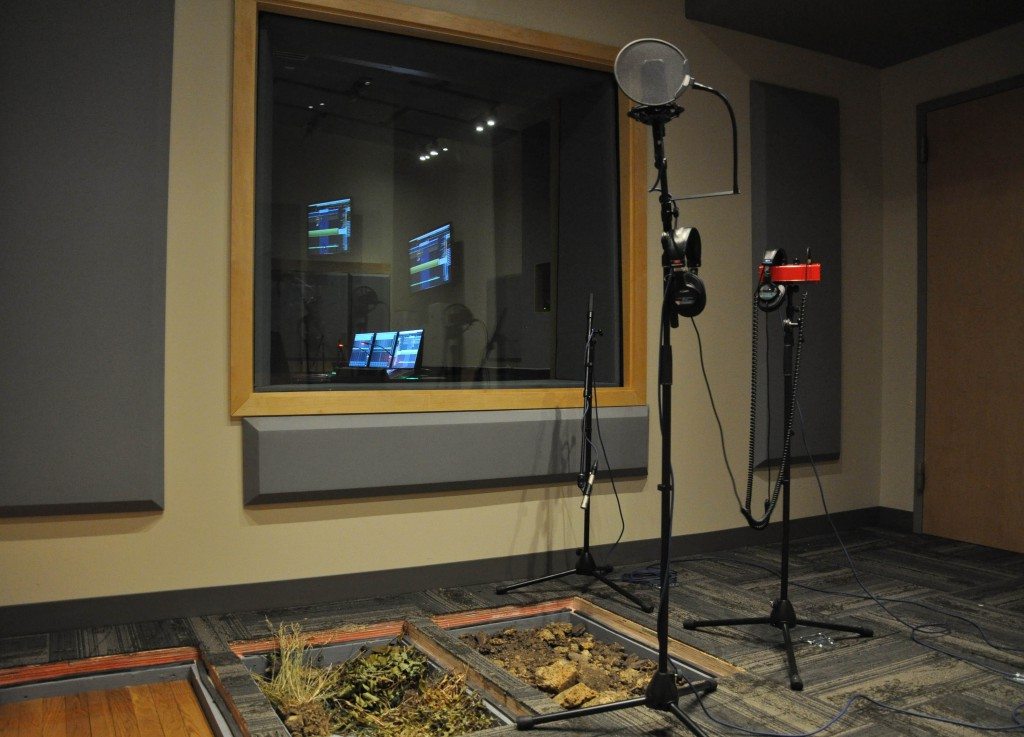
Considering potential job growth in gaming and audio for multimedia content, virtual reality is at the top of the curriculum list, explains Snyder, further supporting his college’s significant Nuendo/Nuage investment.
“There is absolutely no better software for creating audio for virtual and augmented reality than Nuendo. For example, Oculus and Microsoft have adopted Nuendo and the Nuage mixing systems for internal use. In addition, our college recently launched the Immersive Media Initiative to develop a virtual and augmented reality production curriculum at the Ohio University GRID Lab. Their post-production facility also features Nuendo and Nuage. On campus, we have 30-plus seats of Nuendo and, now, two Nuage rooms.”
Snyder is careful to emphasize the new studio’s role as a place to collaboratively listen as well. The studio features a number of Radio Design Labs RDL TP-HA1A stereo headphone amplifiers for personal listening purposes that use the rooms Dante network. “It’s a critical listening and post-production room,” he notes. “It’s a tall mixing stage with the Nuage surrounded by 20-plus seats, so the students can actually sit around the film mixing stage, getting into the sweet spot to be part of the mixing process. It’s a great room for critical listening. That, and all the seats have head-mounted headphone jacks; every single seat is the best seat in the house, if you will. So it really is a dual-purpose room.”
While many bachelor of science degrees in audio production disciplines are found within schools of music and even engineering departments, Snyder feels that his college of communication provides a unique angle on teaching audio production. “It gives us a lot of freedom with our curriculum,” he explains. “Having that freedom means we can better teach students to be responsible, media-savvy, forward-thinking [content] producers and audio engineers. We want them to have a broad taste, as in the world today, there’s more media created than ever. Our philosophy, looking at it all holistically, is that there will always be jobs in audio production, but you have to know what those jobs are and how to go out there and get them. Because we’re in a media school that teaches audio, video, games animation, screenwriting, producing, digital storytelling—all this—students will know how to produce audio for games, video, animation and beyond, leaving the school well-prepared for the future.”
Snyder Hosts Record Number Of Students For 2016 High School Media Workshop
Students in the 2016 High School Media Workshop work on sound effects in the new Schoonover Sound Post-Production & Listening Lab with High School Media Workshop Associate Director Kyle Snyder and MDIA student Michael Warning (both seated at the Yamaha Nuage control surface).
The School of Media Arts & Studies High School Media Workshop, which took place from July 13-16, welcomed 92 students, the largest group to date. The workshop introduced students to the latest techniques and equipment in audio, video, animation & games, film sound and storytelling/producing classes taught by School of Media Arts & Studies professors.
“Fantastic workshop experiences in our first two years have resulted in buzz among past students, parents and high school teachers, leading to this large enrollment increase,” said High School Media Workshop Director Karen Riggs. “Some parents told us they discovered the workshop while doing a Google search–growing interest is leading to prominence in search results. This year, with our excellent faculty and student staff, we delivered the highest-quality workshop in our short history.”
During the workshop students were divided into four different cohorts, where they rotated through the same program, providing a sampling of the entire MDIA curriculum. Emily Gayton, a senior from Olean, N.Y., had visited Ohio University for college tours before but this was her first time attending the High School Media Workshop.

“I came in with an open mind,” said Gayton. “I wasn’t sure what medium I wanted to do, so being able to work with these programs and get a grip on what I already know was helpful. This media workshop has done a lot helping me to figure out where I’m going. I love writing and learning the format for screenwriting and how to do things professionally was really helpful. I feel that I can bring two things that I love doing together, media and writing.”
This summer, workshop participants were able to get hands-on experience in several newly completed MDIA studios and labs.
“It was truly gratifying seeing students interacting and engaging with our just opened and cutting-edge facilities,” said High School Media Workshop Associate Director Kyle Snyder. “Their imaginative use of the new spaces is precisely what we hoped for throughout the design process and I couldn’t be more proud.”
One of the most anticipated classroom spaces to be utilized was the Schoonover Sound Post-Production & Listening Lab, located in Schoonover Center Room 448. This lab allows students to create and listen to sound in an acoustically pristine environment and have the capability for state-of-the-art audio post production for moving images, including film. During the workshop students were able to create sound effects for an animation clip in the Foley room, a studio that includes nine Foley pits and various props to create the needed sounds. During the workshop, students created the sound of a cardboard box opening, an individual walking across different surfaces on crutches, and the clicking of a video game remote control.
“The Schoonover Sound Post-Production & Listening Lab is awesome, because not only is it a really new space, but it’s a lot bigger than what we had before and it feels a lot more purpose built,” said MDIA music production senior Michael France, who assisted with the workshop. “It’s really hard to act out sounds along with a film, for example it’s really hard to time walking, but the workshop students were great and they picked up on everything quickly. Many of them came to the workshop with just one interest, but I think they learned a lot about what goes on behind the scenes. Specifically, in the 448 lab, I think a lot of people learned just how much sound replacement goes on in movies and film.”
The workshop ended with a farewell banquet and a screening of student projects created during the week.
“We screened and shared their videos, recordings, film sound projects and animations at our banquet on the final evening of the workshop,” said Riggs. “It was beyond impressive to see what they produced in short bursts of activity. They’re obviously going to become leaders in the creative industries, and we’re looking forward to seeing them here as first-year students.”
For more information on the 2016 High School Media Workshop, visit mediaschool.ohio.edu/hsmw. See photos as well as projects from the 2016 workshop on the workshop blog.
Snyder Presents at 140th Audio Engineering Society Convention
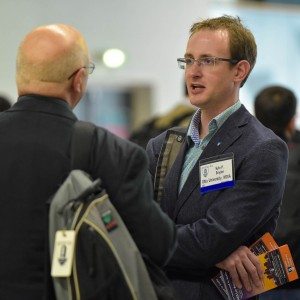 At the 140th Audio Engineering Society Convention hosted in Paris from June 4 – 7, 2016, Ohio University Lecturer Kyle P. Snyder chaired a roundtable discussion featuring expert guests titled, European Audio Education: Possibilities and Challenges.
At the 140th Audio Engineering Society Convention hosted in Paris from June 4 – 7, 2016, Ohio University Lecturer Kyle P. Snyder chaired a roundtable discussion featuring expert guests titled, European Audio Education: Possibilities and Challenges.
In this panel session featuring invited experts from across the continent, we discussed a variety of topics germane to European audio education including:
• Educational opportunities that are unique to Europe with a focus on exchange / internship opportunities.
• Challenges unique to both European educators and students including suggestions from both the panel and audience.
Guests included Mark Drews, Nyssim Lefford, Theresa Leonard, Denis Vautrin, and Nicolas Verastegui
Related Links:
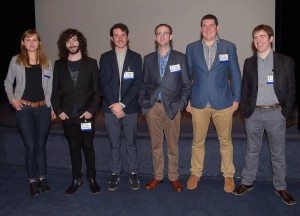 Also at the 140th Convention, one of Snyder’s students, Michael France, continued his work as the Audio Engineering Society Student Delegate Assembly Vice Chair for North & Latin America. France was elected at the 139th AES Convention.
Also at the 140th Convention, one of Snyder’s students, Michael France, continued his work as the Audio Engineering Society Student Delegate Assembly Vice Chair for North & Latin America. France was elected at the 139th AES Convention.
The 140th AES Convention brought together the world’s largest gathering of audio professionals, offering attendees opportunities to hear from top audio industry figures while also sharing in the latest research and technology information through informative papers, tutorials, workshops and special events.
Snyder Plays Integral Role In New MDIA Facilities
Students in the School of Media Arts & Studies are able to explore a wide range of courses that match their own interests and talents that will prepare them for a career in media. The school has several state-of-the-art facilities and labs and teaches students how to use the tools of the trade, from software to audio equipment, allowing them to graduate with plenty of hands-on experience.
All MDIA students have access to a classroom and lab wiki, known as the MDIA Sound Studio Manual, a website updated by faculty that allows students to see the spaces in real time and have updates and classroom information at hand almost instantly. Students can see when a classroom or lab is being used by a class or is available, view equipment operation manuals and they can access a list of available audio equipment and computer software. Students even have access to the sound effects servers through the Studio Manual.
“Students can see information from when rooms are occupied to the specific technology and software offered in each classroom paired with relevant support materials, it’s really an ideal teaching tool,” said Kyle P. Snyder a lecturer in the School of Media Arts & Studies. “Students can even see what field equipment is available including quantities and manuals. This tool came about because there is a seemingly infinite amount of information that needs to be conveyed which required a central repository. The Music Production & Recording Industry (MPRI) faculty realized if we put everything online students could have this available at all times. There is little information that students can’t find on the Studio Manual. It’s really fantastic.”
One of the first classrooms all Media Arts & Studies students will experience is Schoonover Center Room 346, the MDIA Lab. This collaborative classroom seats about 30 students in small “pods”, six students to a pod, with projector screens on two walls. In this classroom audio and video students work alongside one another on joint projects learning the basics of production. The pod seating design allows for better student-to-student interaction and facilitates student engagement and productivity in the class overall according to Snyder.
“The layout increases productivity, it helps you pay attention in class, it helps you work with other people,” said Chrissy Grubb, a freshman integrated media major. “I like the ability to use all of the technology that’s on the Mac computers and I like how the desks are set up in little pods so it increases workability with other students. I also like the double layout of the projection screens so it’s a lot easier for people on both sides of the room to follow along with what’s going on.”
Upper class juniors and seniors can often be found in the Electronics Lab, located in Schoonover Center Room 351. In the course MDIA 4305 Recording Studio Design and Maintenance, taught by Associate Professor Jeff Redefer, students learn how to repair and even build their own audio equipment. Students in the course start off building a cable tester and then progress to repairing other analog equipment such as aligning analog tape machines. Just this academic year students have built analog compressors, reverb units and entire microphones.
“These are marketable skills that serve students well as they enter the workforce,” said Snyder. “Maybe they don’t want to go out and build analog recording consoles for a living but if they know how to repair things, if you are that person who can make themselves marketable by bringing other skills to the table, that’s the type of person who’s far more employable. They become one of those indispensable people with an additional skillset who’s not just a producer, not just an engineer, they’ve got that additional x factor.”
The Sound Recording Studio in RTV Room 329, while technically built in 2003, has been updated recently during the Schoonover Center renovation project. The studio contains a large and small isolation booth, a control room, and a large and small live room for MDIA students to learn the building blocks of working in a recording studio. The highlight of the studio is the large Rupert Neve 5088 Analogue Mixer, a testament to the foundation lessons the faculty teach when it comes to the digital vs. analogue debate.
“You learn on analogue because that’s the foundation of everything in a studio,” said Snyder. “Every physical channel within the analog realm is equal to one microphone on a snare drum, one guitar, etc. There is no right click, there is no menu – everything is right in front of the student. They can very easily visualize the signal path and if they can get audio to pass through an analog recording console it will be far easier for them to work across a variety of software platforms. It’s also great way for us to teach them troubleshooting.”
The studio also utilizes and teaches Pro Tools and Logic Pro software, which are industry standards. Students are also able to learn how to setup and use a wide assortment of microphones, running the gamut from from higher end to middle-of-the-road mics and even some budget microphones.
“It’s important to learn what great microphones sound like but it’s more important for students to know proper mic techniques regardless of their budgets,” said Snyder. “Because it’s not the mic; they’re learning the skills.”
The School of Media Arts & Studies has two new exciting spaces coming online later this summer. The Schoonover Sound Post-Production & Listening Lab, located in Schoonover Center Room 448, will be completed in time for the 2016 High School Media Workshop in July. This lab will allow students to critically listen to sound in an acoustically pristine environment and have the capability for state-of-the-art audio post production for moving images, including film.
The MDIA Mixing & Mastering Studio, located in the RTV Building Room 315, currently offers a general use vocal booth in an outside vestibule that has been online since early spring semester which is available for MDIA student use. The remainder of the studio is expected to come online later this summer and will allow the school to book RTV 315 and RTV 329 separately, effectively doubling the amount of students that can be accommodated to work in a recording studio space. Studio spaces were designed by WSDG and audio integration plans were designed by Snyder.
To view some of these MDIA classrooms, view the photo album on Flickr.
For more information about the School of Media Arts & Studies and their facilities visit mediaschool.ohio.edu.
Image: School of Media Arts & Studies students work on different electronic equipment in Schoonover 351. Photo by Margaret Sabec. Original article by Claire Berlin
